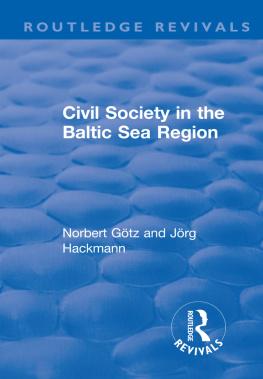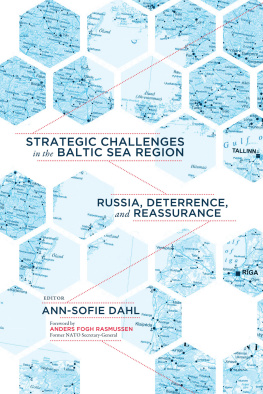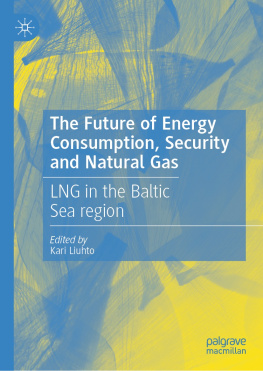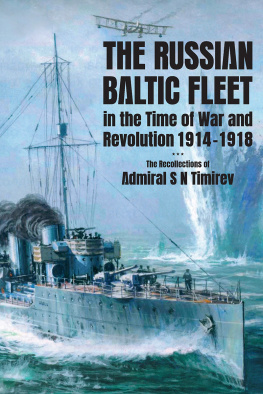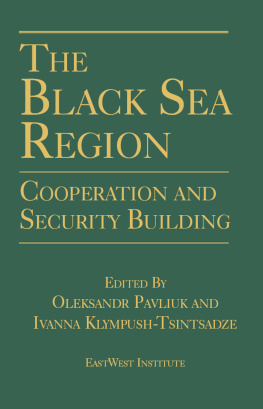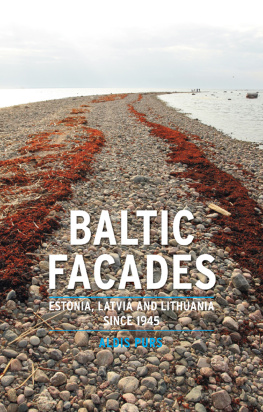First Published in 1999 in Great Britain by
FRANK CASS PUBLISHERS
This edition published by Routledge
2 Park Square, Milton Park, Abingdon, Oxfordshire 0X14 4RN
711 Third Avenue, New York, NY 10017
Copyright of collection 1999 Frank Cass & Co. Ltd
Copyright of chapters 1999 contributors
British Library Cataloguing in Publication Data
Stability and security in the Baltic Sea region : Russian,
Nordic and European aspects
1. National security Baltic States 2. National security
Russia (Federation) 3. National security Government policy
- Baltic States 4. National security Government policy
Russia (Federation) 5. National security Government policy
- Europe 6. Baltic States Foreign relations Russia
(Federation) 7. Russia (Federation) Foreign relations
Baltic States
I. Knudsen, Olav F.
327.4'79'047
ISBN 0-7146-4932-5 (cloth)
ISBN 0-7146-4492-7 (paper)
ISBN 978-1-1352-3289-4 (ePub)
Library of Congress Cataloging-in-Publication Data
Stability and security in the Baltic Sea region : Russian, Nordic and
European aspects / edited by Olav F. Knudsen.
p. cm.
Includes bibliographical references and index.
ISBN 0-7146-4932-5 (cloth). ISBN 0-7146-4492-7 (pbk.)
1. National security-Baltic States. 2. National security-Russia
(Federation) 3. Baltic States-Relations-Russia (Federation)
4. Russia (Federation)-Relations-Baltic States. 5. Baltic States
Relations-Europe. 6. Europe-Relations-Baltic States.
I. Knudsen, Olav.
UA646.53.S73 1999
355'.0330479-dc21
98-37435
CIP
All rights reserved. No part of this publication may be reproduced, stored in or
introduced into a retrieval system, or transmitted, in any form or by any means,
electronic, mechanical, photocopying, recording or otherwise without the prior
written permission of the publisher of this book.
Typeset by Vitaset, Paddock Wood, Kent
OLAV F. KNUDSEN
Norwegian Institute of International Affairs, Oslo
By the end of the twentieth century the Baltic Sea was close to becoming a lake in the European Union (EU). The region had survived, yet not entirely shaken off, one of the most complicated transitions brought on by the end of the Cold War: liberation of the three Baltic states, the breakdown of the Soviet Union, and the transformation of the Baltic Sea area from a zone of confrontation into one of potential integration. Nevertheless, during the first half of the 1990s the Baltic Sea region experienced a range of conflictual encounters between the USSR and its successor state Russia on the one hand, and Estonia, Latvia and Lithuania on the other. Although instances of violence were fortunately brief, limited in scale and have not been recurring, conflictual relations and associated tension have continued to mark bilateral relations across these borders. At the same time, new cooperative relations have been established, which to varying extents encompass all the states in the region.
It must be taken for granted that conflict in the form of diverging or incompatible interests or values will always be present, in the Baltic Sea region as elsewhere. But new regional institutions and new, more equitable cooperative practices in the region indicate the possibility of overcoming traditional, destructive ways of dealing with conflict.
The conceptual debates of the 1990s demand that some attention be paid to definitions and usage. Security, as the subject matter of this book, has to do with how one deals with conflict so as to limit the harm it brings to the physical and social well-being of individuals and the political and economic well-being of societies. is accelerated by fundamental social change such as the transition taking place in the east-central European area towards democracy and market economy. The maintenance of security in the region must therefore be linked analytically to the stresses brought about by such large-scale social change.
The transitions of societies to fundamentally different modes of governance and economic relations take time. However, external influences may speed up the rate of change. In the Baltic Sea case, impulses from regional Nordic and EU members stimulate the processes of change within the neighbouring transitional societies. There can be little doubt that the daily contacts established across the Baltic Sea in large and growing numbers since 1990 in themselves have spurred a reform-oriented outlook, especially in Estonia, Latvia and Lithuania.
Still, it needs to be recognized that even a decade after the dissolution of the USSR the changes brought about by this momentous event are only beginning. New economic systems depend also on changes of attitudes in the population, which in turn require generational change. New political habits, providing a new framework for the functioning of a society and its economic system, take shape only through repetition by successive political elites. Thus, the first decades of the twenty-first century, like the last of the twentieth, are likely to continue to struggle with the legacy of Soviet Russian rule. The fringes of Russia east, south and west will therefore continue to have a complex relationship with their great neighbour.
It is for this reason that the present volume emphasizes the long-term perspective. The book sets out to explore the prospects of security in the Baltic Sea region for the coming decades, to assess on the basis of present trends and developments the probability, as we enter the twenty-first century, that the governments and groups of this area will be able to resolve their differences without recourse to the threat or use of violence.
The Baltic Sea regions history in the twentieth century, marked by unprecedented levels of violence, has set the stage for such an inquiry. These upheavals were both preceded and followed by ideological confrontation, going back as far as the early part of the century. In the second half of the century the militarized and industrial evolution of communist rule in Eastern and Central Europe brought on the now-familiar environmental, economic and health-related disasters, spurred by the bipolar contest.
Many observers at the end of the Cold War saw in these trends a need to redefine security in a broader way to tone down the military aspects and increase the attention paid to non-military threats. The present volume emphasizes the links between the military and non-military aspects. One should not overlook the connections between the long-term convulsions of European social conflict and the excesses of the Soviet system as it fought for its survival. Before 1989 the contrast between the systems East and West was most visible in Germany. By the 1990s the Baltic Sea became a shuttle route connecting widely disparate sections of the social, environmental and economic spectrum at the two ends.
In the cooperative and conciliatory spirit of the 1990s, the discordant differences between the old East and West have been downplayed and muted. Nevertheless, significant discrepancies persist, even as some parts of the former Soviet Union proceed through fundamental economic change to get ready for membership in the European Union. Remaining disparities in social standards, life-style and political culture not to mention living standards are likely to continue to spur discord and trigger processes of regional conflict. Hopefully, such conflict will gradually be replaced by the conflicts of ordinary international economic exchange, in which growing interdependence transforms the nature of conflict from a zero-sum to more of a positive-sum relationship. By the mid-1990s such trends were already underway, but in the short run their ameliorating effects would only be noticeable on the surface. In the meantime, one may observe that the processes of change in the region represent such a


